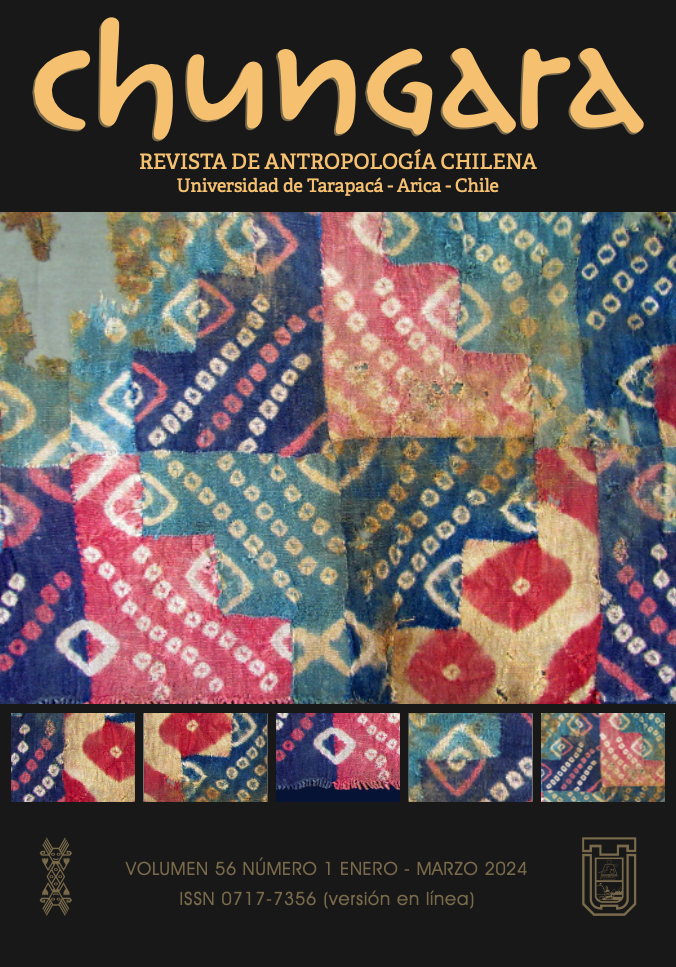Written by Super User. Posted in Papers - English
MANUFACTURE OF COPPER ORE BEADS IN ATACAMA (CHILE) DURING THE MIDDLE HORIZON (CA. 400-1000 AD): NEW CONTEXTUAL EVIDENCES AND CONTRIBUTIONS FROM EXPERIMENTAL ARCHEOLOGY
MANUFACTURA DE CUENTAS DE MINERAL DE COBRE EN ATACAMA (CHILE) DURANTE EL PERÍODO MEDIO (CA. 400-1.000 DC): NUEVAS EVIDENCIAS CONTEXTUALES Y APORTES DESDE LA EXPERIMENTACIÓN ARQUEOLÓGICA
Helena Horta Tricallotis and Wilfredo Faundes Catalán
This article presents the results of contextual research and archaeological experimentation carried out in relation to the social and ritual role played by the manufacture of copper ore objects (beads, pendants and plaques, mainly), and their various
contexts of use in the Atacama salt flat for the Middle Horizon (ca. 400-1000 AD). Our analysis - focused on the comprehensive observation of the elements that made up the burial offerings of Quitor 6 cemetery in San Pedro de Atacama - throws light
on the renewed importance gained by this industry during the Middle Horizon. At the same time, it reveals hitherto unknown details about the specialization and differential distribution of lapidary manufacture within the Atacamenian society. Through the application of archaeological experimentation, the original function of a wooden artifact has been established, which turns out to be the base or support used specifically for the drilling of beads. New information is also presented about certain funerary ritual gestures associated with copper ore, data that reinforce the special bond that existed for thousands of years between the mineral, the Atacamenian communities (ayllus) and the objects offered to their ancestors or deities. We consider that this set of evidence strongly suggests that the population buried in Quitor 6 cemetery could correspond to a group specialized in copper ore lapidary manufacture.
Continuar leyendo - PDF
Print
Email
Written by Super User. Posted in Papers - English
LOCAL METAL PRODUCTION AND COEXISTENCE OF METALLURGICAL TECHNOLOGIES IN SAN PEDRO DE ATACAMA DURING THE MIDDLE PERIOD (400-1000 AD)
PRODUCCIÓN METALÚRGICA LOCAL Y COEXISTENCIA DE TECNOLOGÍAS METALÚRGICAS EN SAN PEDRO DE ATACAMA DURANTE EL PERÍODO MEDIO (400-1000 DC)
Ariadna Cifuentes, Valentina Figueroa, Diego Salazar and Benoît Mil
During the Middle period (400-1000 AD), metal objects increased significantly in the cemeteries of San Pedro de Atacama, suggesting the centrality of metals in the structuring of relations between local leaders and Tiwanaku. This paper presents
the metal objects that circulated in the Atacamenian space during this period through their typological identification, the determination of the alloys in which they were manufactured and their productive evidence. From these results, we discuss the presence of a local metallurgical production and its coexistence with other technological traditions in the South Central Andes. We conclude by evaluating aspects of the social production and use of metals during the Middle Horizon in San Pedro de Atacama.
Continuar leyendo - PDF
Print
Email







